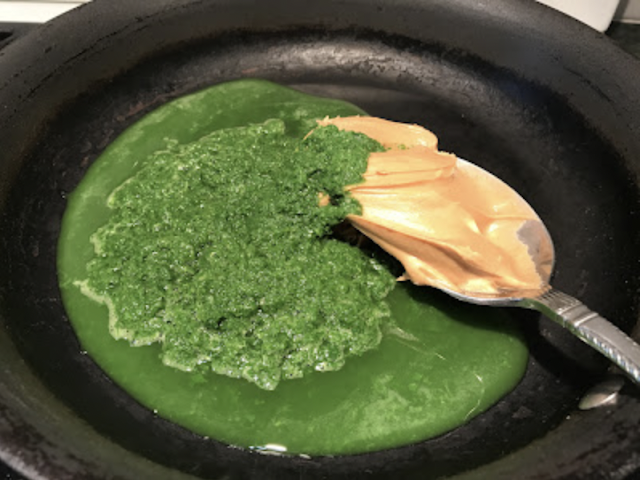Do you grow radishes? Do you buy radishes with the greens still on? Those greens, even if they're semi-wilted, can be used in meals. No sense throwing them out.
You've read about me using the tender and young radish greens to add texture and zing to salads. But those mature ones (like on bundles of radishes from the store) are edible, too -- cooked and added to sides and main dishes. The trick is to blanch and puree them, then moderate the bitterness with other ingredients. My favorite extra ingredients to tame these greens include onions, garlic, bacon/sausage/ham (or their rendered fats), peanut butter, pinch sugar, and/or salt. In addition, tossing with cooked starchy foods, such as mashed potatoes, cooked pasta, or cooked rice, will also subdue that bitter bite.
These are aging radish plants from this past winter that I grew indoors. I moved them outdoors when I needed my lights for starting seeds. The ones in these buckets never produced nice roots. But the mature greens still have food value.
I picked a bowl full to use in Wednesday's dinner. After washing, I microwaved the greens for a minute to quick steam them. I minced a clove of garlic, then pureed both greens and garlic together with some water, using my immersion blender.
I added a large spoonful of peanut butter to the greens-garlic puree in the skillet. I also added some chopped peanuts, onion powder, soy sauce, red pepper flakes and water enough to make a sauce, heating through over Med-Low.
Meanwhile, I cooked pasta according to package directions.
Once the pasta was cooked and drained, I tossed it with the radish green sauce. I adjusted for taste with another splash of soy sauce and this side dish was complete.
I have enough radish greens growing in those buckets to make this dish one or two more times. As greens go, these might be too bitter on their own. But pureed, then combined with garlic and peanut butter (plus a couple other ingredients), not only are the greens palatable, but they made a dish that my family really enjoyed.
Just sharing in case you're like me, and you don't want to waste a single food right now.












